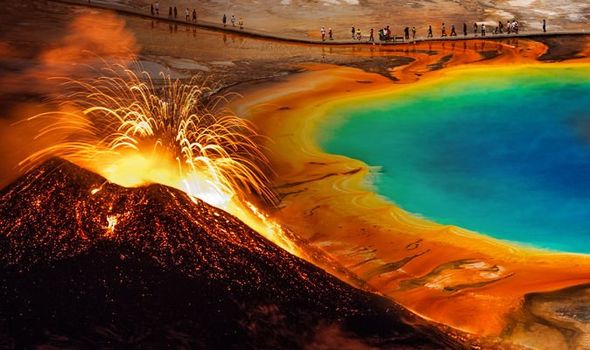Discovery Of Ancient Super-Eruptions Suggests That The Yellowstone Hotspot Might Not Be A Reason For Concern

Volcanic super-eruptions are some of the most extreme natural events and have significant effects on the planet’s surface.
Super-eruptions typically eject over 1,000 times more material than the 1980 eruption of Mount St. Helens. Such eruptions can violently impact the planet’s climate, though relatively few such events have been documented throughout history.
A Decreasing Threat
A recent study posted in Geology says that researchers pinpointed two previously -unidentified super-eruptions associated with the Yellowstone hotspot.
The result of the study revealed that the Yellowstone hotspot, home of many mud pots, fumaroles, and geysers might be decreasing in intensity.
The discovery was made after the team used various techniques like magnetic data, bulk chemistry, and radio-isotopic dates to find links between volcanic deposits scattered across tens of thousands of square kilometers.
Thomas Knott, a volcanologist from the University of Leicester and the paper’s lead author, stated:
“We discovered that deposits previously believed to belong to multiple, smaller eruptions were colossal sheets of volcanic material from two previously unknown super-eruptions at about 9.0 and 8.7 million years ago.”
Eruption Rate
Both of the newly discovered super-eruptions that occurred during the Miocene brought the total of super-eruptions from the Yellowstone-Snake River volcanic province of that time to six.
Therefore, it was concluded that super-eruptions during the Miocene happened once every 500,000 years in the Yellowstone hotspot.
However, it appears that the Yellowstone hotspot has experienced a decrease of over 60% in its ability to produce super-eruption events, Knott said.
“This is a very significant decline,” he added.
Knott said the good news is that we might be 900,000 years away from another super-eruption in the Yellowstone hotspot. However, he also stressed that the estimate is far from precise.
0 comments